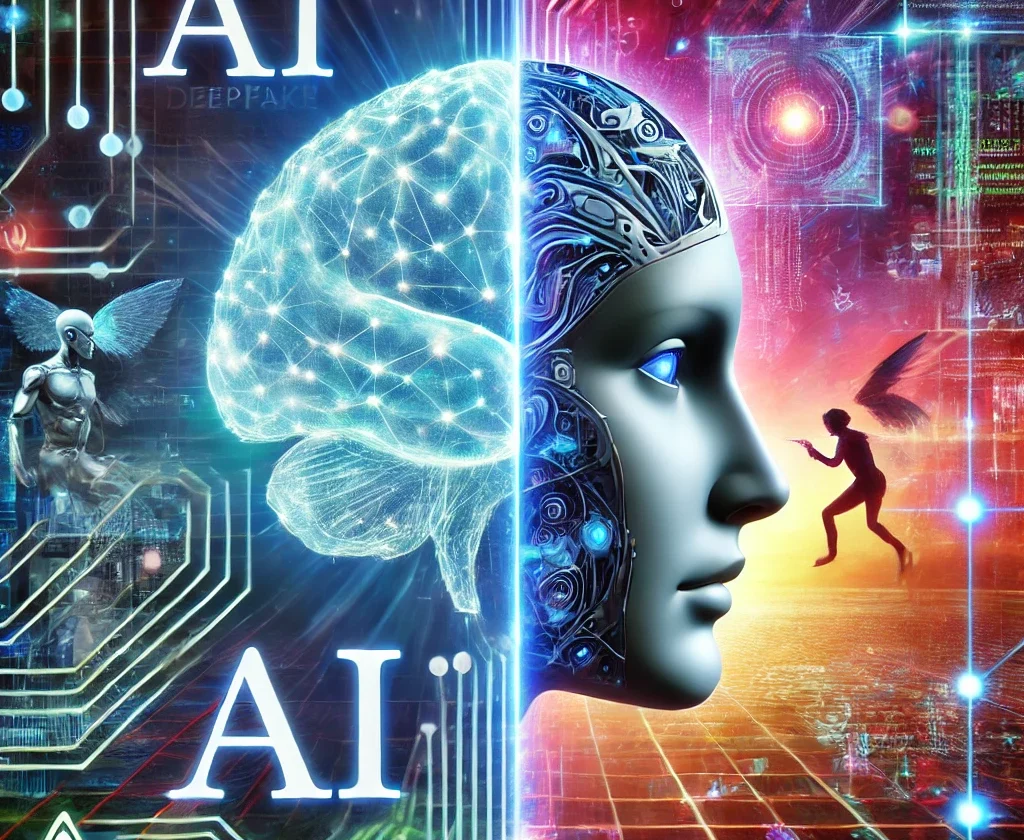AI and Deepfake: Threat or Opportunity? Navigating the Ethical and Technological Crossroads

Artificial Intelligence (AI) has revolutionized industries, from healthcare to entertainment. Yet, one of its most controversial applications—deepfake technology—has sparked global debates. Combining generative adversarial networks (GANs) and machine learning, deepfakes can create hyper-realistic synthetic media, blurring the line between reality and fiction. While critics warn of its potential for misinformation and fraud, advocates highlight transformative opportunities in creativity and innovation. This 3000-word analysis examines both sides of the deepfake debate, offering actionable insights for policymakers, technologists, and users.
1. Understanding Deepfake Technology
How Do Deepfakes Work?
- GANs (Generative Adversarial Networks): Two neural networks—the generator (creates fake content) and the discriminator (detects fakes)—compete, refining outputs until they become indistinguishable from reality.
- Key Tools: Open-source libraries like DeepFaceLab and Faceswap democratize access to deepfake creation.
- Evolution: From face-swapping apps to real-time video manipulation (e.g., Deep Nostalgia by MyHeritage).
Technical Milestones
- 2017: First viral deepfake (celebrity face-swapped videos).
- 2023: AI-generated voices mimicking public figures (e.g., Biden, Trump).
- 2024: Text-to-video models like OpenAI’s Sora producing cinematic-quality clips.
2. The Threat Landscape: Risks of Deepfakes
a. Misinformation and Political Manipulation
- Case Study: The 2023 “Deepfake Zelensky” video falsely showed Ukraine’s president surrendering to Russia, causing panic.
- Election Interference: AI-generated robocalls impersonating politicians (e.g., New Hampshire primary scandal).
- Psychological Impact: Erosion of public trust in media (“Liar’s Dividend” effect).
b. Identity Theft and Fraud
- Financial Scams: Deepfake audio mimicking CEOs to authorize fraudulent transactions (e.g., $35 million bank heist in Hong Kong).
- Revenge Porn: Non-consensual explicit content, disproportionately targeting women.
c. Reputational Damage
- Corporate Risks: Fake videos of executives making inflammatory statements.
- Legal Challenges: Difficulty prosecuting deepfake creators under existing laws.
3. The Opportunity Spectrum: Positive Applications of Deepfakes
a. Entertainment and Creative Industries
- Film Restoration: Resurrecting deceased actors (e.g., James Dean in Finding Jack).
- Personalized Content: AI-generated avatars for interactive gaming and VR experiences.
b. Education and Training
- Historical Reenactments: Students interacting with AI-generated figures like Einstein or MLK.
- Medical Simulations: Deepfake patients for training doctors in rare scenarios.
c. Healthcare and Accessibility
- Speech Synthesis: Restoring voices for ALS patients (e.g., Project Revoice).
- Mental Health: AI therapists using avatars to reduce stigma in counseling.
d. Art and Innovation
- Digital Art: Artists like Refik Anadol using GANs for immersive installations.
- Marketing: Hyper-personalized ads with localized avatars.
4. Ethical and Regulatory Considerations
a. The Ethical Dilemma
- Consent: Who owns your digital likeness?
- Bias: Racial and gender disparities in training datasets (e.g., darker-skinned faces misrepresented).
b. Global Regulatory Responses
- EU AI Act: Labeling requirements for synthetic media.
- U.S. Deepfake Task Force: Proposed federal penalties for malicious use.
- China’s Approach: Real-name verification for deepfake tools.
5. Mitigating Risks: Solutions for a Safer Future
a. Detection Technologies
- AI-Powered Tools: Microsoft’s Video Authenticator, Intel’s FakeCatcher.
- Blockchain Verification: Adobe’s Content Credentials for tracking media origins.
b. Public Awareness and Education
- Media Literacy Programs: Teaching users to spot inconsistencies (e.g., unnatural blinking in deepfakes).
- Whistleblower Platforms: Reporting hubs like Deepfake Watch.
c. Corporate Responsibility
- Tech Giants’ Policies: Meta’s labeling of AI-generated content on Instagram/Facebook.
- Ethical AI Frameworks: Partnership on AI’s guidelines for synthetic media.
6. The Road Ahead: Balancing Innovation and Ethics
- Opportunity for Collaboration: Governments, tech firms, and civil society must co-design guardrails.
- Future Trends:
- Decentralized AI: User-controlled digital identities via Web3.
- Ethical Deepfake Marketplaces: Licensing synthetic media for approved uses.
Conclusion
Deepfake technology embodies the dual-edged sword of AI. While it threatens democracy, privacy, and security, it also unlocks unprecedented creative and practical potential. The path forward requires proactive regulation, cutting-edge detection tools, and global cooperation. As AI evolves, society must ask: Will we weaponize innovation, or harness it to uplift humanity?













